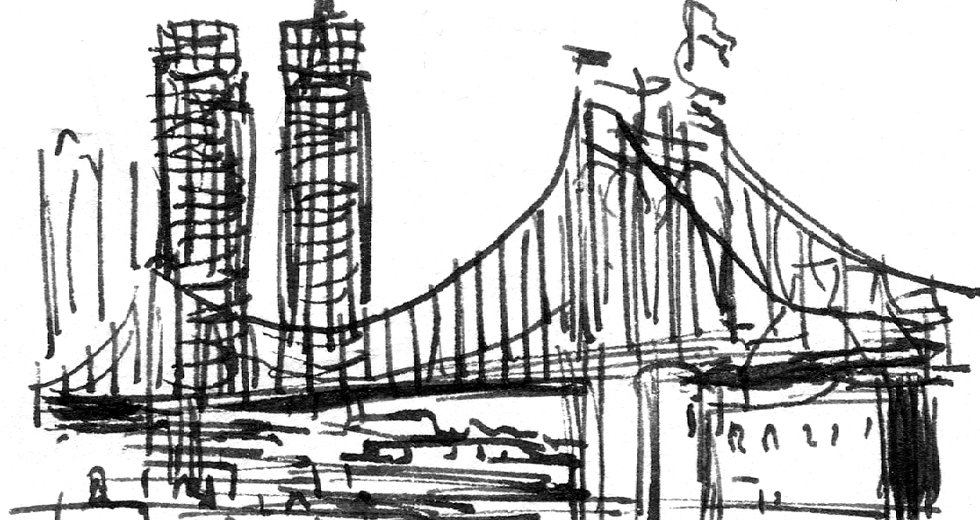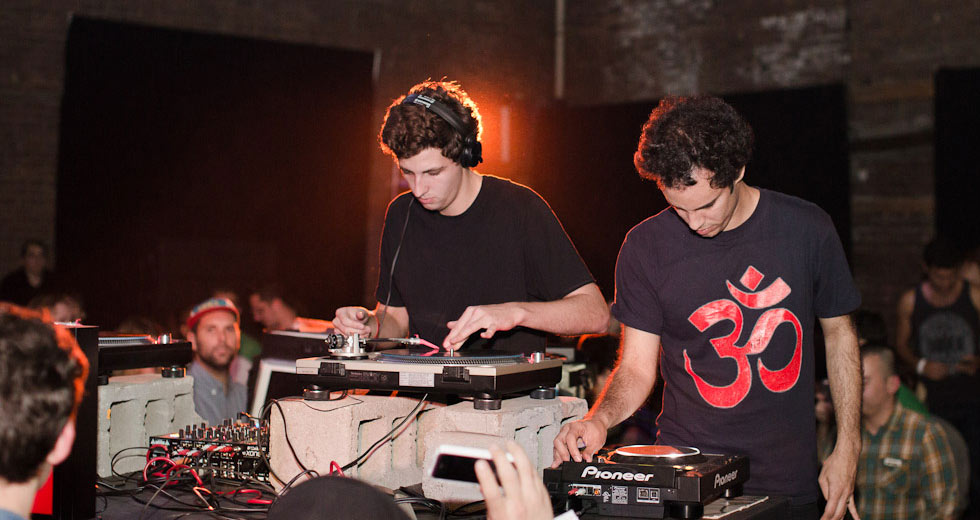Interview: Toshio Nakanishi on Hip Hop, New Wave, and Punk
The Plastics, Melon, and Major Force man on his multi-faceted career.

Toshio Nakanishi is one of the most well-known Japanese rock/pop musicians of all time. He appeared on the scene as the frontman of Plastics at a moment – the late ’70s and early ’80s – when the country’s artists were looking to make it in the West. He instead grounded the genre of technopop firmly in the tapestry of Japanese music, and subsequently drew attention from Island Records, who were strategically looking to explore and grow post-Bob-Marley. They released an album in 1981 and embarked on a world tour, but due to disagreements in the band, they quickly went their separate ways. After the group disbanded, Nakanishi went to New York, and found a new band together with Plastics member Chikako Sato called Melon. Their sound began as funk-influenced New Wave, but then turned into something else entirely.
Playing music has only been a small part of Nakanishi’s career. Nakanishi was a graphic designer by trade, and he designed material for Talking Heads during his Plastics years. He also co-owned Pithecanthropus Erectus, one of the most important venues in the early days of the Tokyo club scene, and producing Melon Private Collection, an exclusive clothing line.
At the end of the Melon era, Nakanishi then went to London and formed a hip hop act called Tycoon Tosh and Japan’s first-ever dance music-only imprint Major Force alongside former Melon members Gota Yashiki and Masayuki Kudo, and also Hiroshi Fujiwara and Kan Takagi. Nakanishi remained there throughout the ’90s, but this interview centers around his youth growing up in an upmarket area of Tokyo called Hiroo, up until the period when arrived in the UK capital.
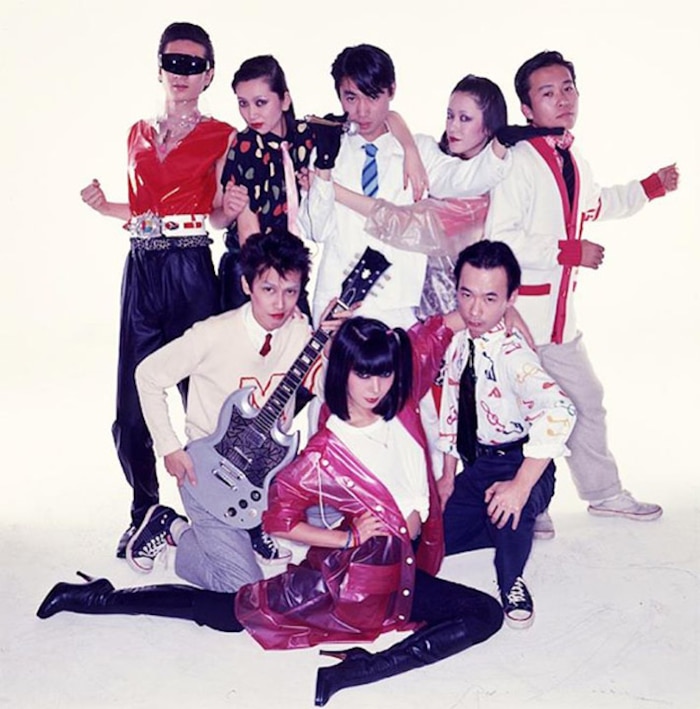
On how he started a band
I wanted to be an illustrator. I used to love Zeppelin as a child. But when Roxy Music appeared, and I started listening to Velvet Underground, Deaf School and Modern Lovers, I started to think that maybe I could also do this. Velvet Underground were around from 1967, but it was much later in the ’70s that it reached Japan. I had read in a fashion magazine an-an about them, but I couldn’t find a shop where they stocked them as an import. The first time I saw the real thing was when I passed by an old record store called “Scandal” near Shibuya.
At first, I didn’t think it was good, and “Heroin” sounded like there were cats jumping around on it. I didn’t get it. I wanted them to have better sound quality. In the magazine it said, “Once you’ve heard Velvet Underground and start liking it, everything else you hear will start to sound old-fashioned.” If you’ve never heard them before, it might be good to start with “Sunday Morning.” You can get into that straight away. When I hear that track I think of early morning Harajuku. It fits perfectly.” I think New Wave started with the people listening to Velvet Underground. Brian Eno once said something like, “The first Velvet Underground album only sold 10,000 copies, but everyone who bought it formed a band.” We wouldn’t have done Plastics if it weren’t for bands like Velvet Underground, Roxy or the Pistols.
Plastics and Kraftwerk
We agreed that if we can’t surpass Bowie or Bryan Ferry in English, then we might as well write in a mix of Japanese and English.
Plastics started out as a punk band, but Kraftwerk was another big influence in our style. I started listening from around Radioactivity, and by Trans-Europe Express, I was very much aware of their importance for me. Hajime [Tachibana, Plastics guitarist] also knew that Kraftwerk were going to be important. We had just started Plastics, and we were saying that we should go more in this direction rather than punk. I had also been exposed to Seditionaries or punks dressed in high fashion in London, and Hajime had seen the Screamers and the Germs in Los Angeles. But the most amazing thing Hajime saw, apparently, was the industrial and cold sound of Devo. Hajime and I thought we should steer the band in the direction of something between the Sex Pistols and Kraftwerk. Probably something like Can. I found out later that Johnny Rotten was also a Can fan, but there was nobody else doing it at the time, so it felt fresh to us.
Around that time I was working as an illustrator at Peter Sato’s studio [a famous Japanese illustrator using airbrush techniques], so the people who would frankly suggest ideas or new directions to us were artists: Peter Sato himself or Toru Kogure, a photographer, who would also frequent the studio. What they used to say back then was, “It’s fine doing Plastics in English, but it ‘somehow’ should be related to home.” Toru and Peter were into Kayōkyoku and Enka [old-fashioned Japanese pop styles], and the studio was decorated with ’50s-style neon tubes on the walls, and the music that was played was hardcore Enka, so it was a really surreal, camp, and kitsch environment. To be camp was to be objective. Whenever I would go to Peter’s New York loft, he would be working and listening to Talking Heads and Enka simultaneously. So in discussing in which language to write lyrics with Hajime, at first he said we should write in Japanese, but in the end we agreed that if we can’t surpass Bowie or Bryan Ferry in English, then we might as well write in a mix of Japanese and English.
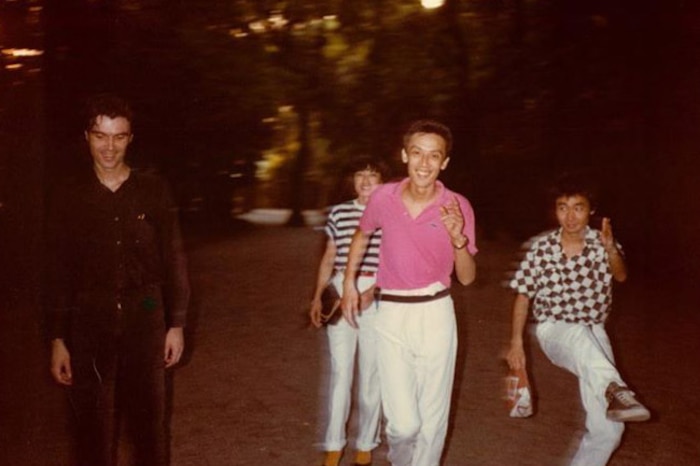
The inspirations of Plastics song lyrics
The Plastics’ lyrics were never written beforehand, though I guess it depended on the song. Hajime always used to say, “How is it that you can write lyrics without any preparation?” There were times where the track was already done and I would write while listening to it. I was also influenced by David Byrne from Talking Heads. Normally, if you’re putting something down on paper, you go from top to bottom, right? In his case, he would have little islands on the bottom... or anywhere. And so the ideas would be put down in fragments and then strung together. So, in this sense, it wasn’t that every line was cut up, but it was still cut up. It’s a Dadaist way of writing. You can hear it on their song “I Zimbra.” When you write this way, you come up with some surprising elements for yourself.
On groove: The influence of New York dance music scene
I didn’t know how Kraftwerk made their beats. They took apart their rhythm boxes and hit them. We never thought of that. But we started researching Kraftwerk, and Hajime bought a synthesizer and a sequencer. The first track we made was “Delicious,” and it was used for the Bigi fashion show. At that time, Ma-chan [Masahide Sakuma] was helping Hajime out a lot.
I don’t think we would have made dance music if we hadn’t gone to New York.
After our first album release on Island, Plastics played in Central Park, opening for Talking Heads. By this point, Talking Heads had become an Afro band. I had listened to the album, Remain in Light, but there were so many things I only understood when I saw them live. David was using the word “trance” a lot, and it wasn’t just a four piece band – there were many more members, and something happened in terms of the groove. You got to this trance-like state. I think My Life in the Bush of Ghosts is trying to incorporate this invisible, magical element. Personally, at first, I didn’t understand black music. “Sex Machine,” I thought, was just a repetition of the words. But Hajime loved listening to R&B, soul, and people like James Brown or Marvin Gaye. And I learned a bit of funk during my period in New York. I don’t think we would have made dance music if we hadn’t gone to New York.
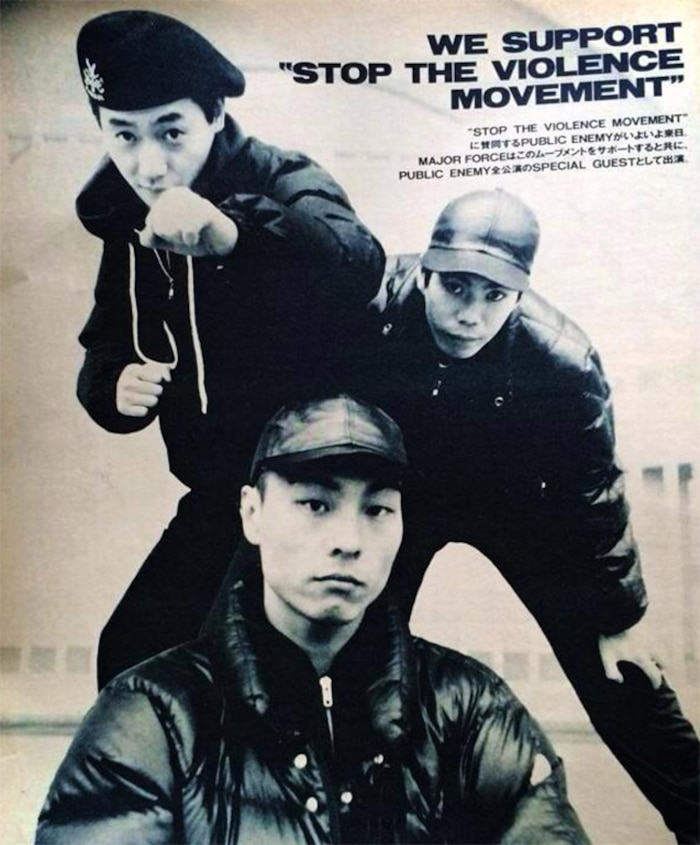
Discovery of hip hop and foundation of Major Force
We set up Major Force in 1988, but in 1981 we had a first taste of hip hop when we were recording Melon in New York. Shigeichi [Kuwahara] – producer and early Plastics manager – heard “Planet Rock” on the radio, and we both went to Peppermint Lounge to hear Afrika Bambaataa. We weren’t prepared for anything like it, and were shocked to see breakdancing. We thought, “What on earth is this?”
We got the dancers to be in the Melon promotion video. I think the only people even aware of hip hop in Japan around this time were me and Hiroshi Fujiwara. In 1983 Fab Five Freddy came to Japan for the promotion of Wild Style. I knew about hip hop, but I was chasing a certain funk-ness with the band Melon. But maybe I was a little confused, having just come from New Wave. There were lots of bands like that back then: A Certain Ratio, Blue Rondo à la Turk, Pigbag, Level 42, and ABC amongst others.
I saw Blade Runner for the first time in a cinema in New York, and I was amazed by it because it was something familiar, in a way.
Blade Runner played a big part in Melon’s concepts and its path to hip hop. I saw Blade Runner for the first time in a cinema in New York, and I was amazed by it because it was something familiar, in a way. It was partly due to the fact that some friends were in the film, but I was overwhelmed by the cheap and dingy commercialized future that resembled Kabukicho [a district in Tokyo]. At the same time, I was heavily influenced by the Beats, like the cut-ups of William S. Burroughs or Brion Gysin.
David Byrne got into Latin / Brazilian sounds after Afro, and continued to work with it for a good ten years, but I think the reason why I never got into that – and went for hip hop instead – was because I saw hip hop as a form of collage and cut-ups. Everyone around me got into those sounds, but I just got bored of it. David and Shigeichi were on the search for the ritualistic in Bahia, but I never had an interest in Batucada for instance. In collage, something happens where you never expected it to. I felt a much stronger, darker possibility in Burroughs’ cut-ups.
London in the ’90s
In London, where we spent the ’90s as Major Force West, there was a real psychedelic atmosphere, like in the ’60s. I was talking with Hosono-san [Haruomi Hosono] of Yellow Magic Orchestra, and he agreed. It wasn’t the acid of ecstasy like the Manchester bands, it was the real psychedelic acid. Due to this, we tried to make psychedelic hip hop. In terms of records, England is the origin of psychedelic rock, and so there were lots to be dug out. Though, there, it would be called trip-hop.
At that time there were people like Oasis and the Verve… the ’90s were a really shit period. Music went downhill. I didn’t really get Primal Scream. I hate Liam from Oasis’ voice, plus he’s too full of himself. Roxy Music, on the other hand, knew their place and where they stood. I think that’s because they had really seen and experienced the Beatles and the Stones. There was no progress with them. You know Beck has a huge amount of talent, but it’s nothing that would take you by surprise. It must have started with Lenny Kravitz’s psychedelic interpretations. Of course, I think he knew what he was doing. In that sense, I think Keith Richards should punch all of them.
During the Plastics period, a kind of easy-to-digest Japanese Kabuki-style stereotype was required of us. But we never did it.
If you go abroad, you cannot help but to rethink your identity. I’m sure, for instance, if you are a guitarist or a bassist, you might join a foreign band. If you are like me, you start thinking about your identity until you feel sick. “What on earth should I sing about in Melon?” I thought about that all the time. I was in New York for a while, and I saw lots of things. I was also based in London. But I am not American. Nor am I a British citizen.
When you enter the pop music world, you’re forced to describe yourself as simply as possible by the record companies. As a Japanese person, a very accessible Orientalism is demanded of you. On top of that, I was a Japanese person making music influenced by hip hop. In a review of Melon’s Deep Cut, someone wrote that it was fundamentally wrong that Japanese people should be making music tinged with hip hop. But I would say I’m fundamentally right. During the Plastics period, this kind of easy-to-digest Japanese Kabuki-style stereotype was required of us. But we never did it. We don’t go around in everyday life in kimonos. That’s why we never casually threw around these typically Oriental-sounding phrases in our tracks. Hajime and I named this “pop life.” And that’s how David Byrne and the B-52’s got to know about Japanese New Wave.
